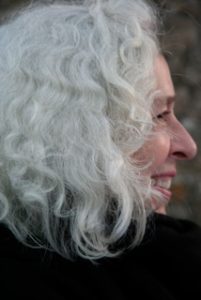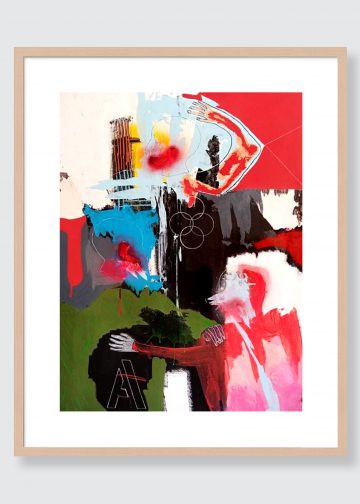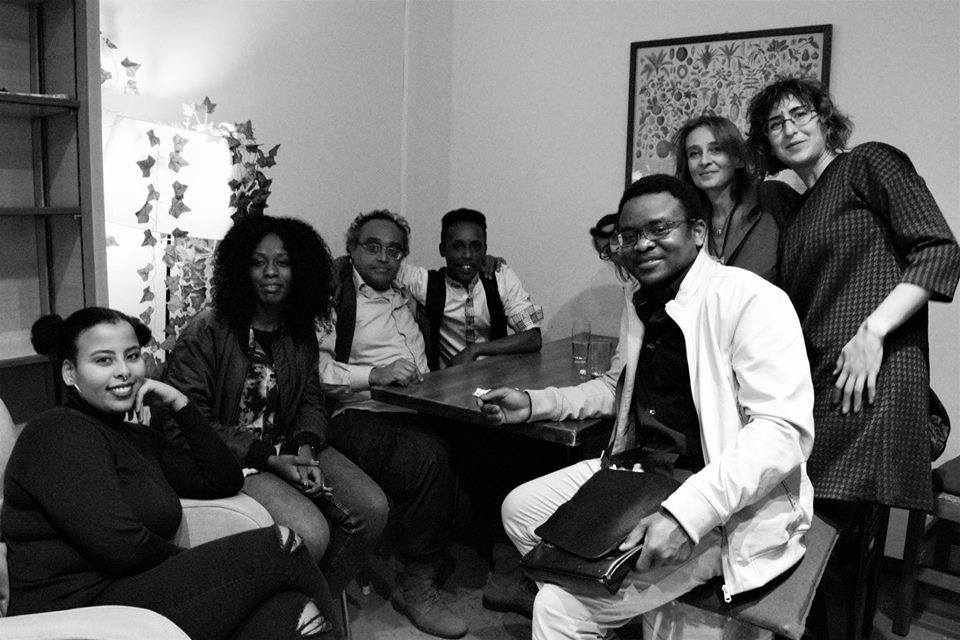Farewell, Silver Girl
It was an ’82 Honda Accord that I bought used in 1986. It had been in an accident and the front bumper was jammed over to the left, and the silver paint job was dulled, blistered, and peeling. After I had owned it for a while, rust spots began appearing in the chassis and holes opened up in various places, including at each corner of the luggage rack on the roof, which I patched with thick wads of plumber’s putty, so that the car looked like it was starting to grow horns. The glass of the sun roof was not tinted, for some reason; most of the time this was not a problem in cool San Francisco, but I did once seriously fear sunstroke when I was stalled in traffic on a hot day on an East Bay freeway.
As I drove the car over the next twenty-five years, it slowly disintegrated, the Honda H on the front disappearing, the rubber stripping around the windows flying off as I drove down the freeway. The aerial broke off at some point, and the cigarette lighter never did work. The door of the glove compartment fell off (and the lock fell out), so I fastened it closed with a bungee cord.
The rubber seals around the edge of the glass on the sun roof eventually came loose, so that the roof leaked in the winter rains. Somewhere in the lid of the hatchback was a major leak, too, so that each winter the back of the car filled up with water, and I had to keep towels in the trunk well to soak it up, as the entire vehicle slowly filled with mold. Because of this, I kept a spray can of Lysol disinfectant in the car, along with plastic trash bag full of bottles and cans to be recycled, and old clothes and unwanted objects waiting to be taken to Goodwill. Although the Lysol did seem to kill the black mold growing on the light gray carpet and upholstery, along with its smell, it turned out that the smell of Lysol was as bad as if not worse than the smell of mildew. So when spring came each year, I alternately drove with the heater turned up as high as it would go (until it stopped working eventually) or with all the windows open to try to cook out the mildew and air out the car. In time, this actually worked.
Then one winter, when I got into my car to go to art class, I noticed some strange beige-colored objects on the floor of the passenger side. At first I thought they might be a form of animal life, like slugs, but when I looked closer I realized that they were a kind of mushroom, growing in the carpet. Horrified, I told myself that never under any circumstances would I tell a living soul that I had mushrooms growing in my car, but as soon as I got to art class I immediately told all my friends: “I have mushrooms growing in my car!”
Because I could not afford a garage in San Francisco, where they cost as much as apartments in some other cities, I had to park on the street in a neighborhood where the already almost-impossible-to-find parking places gradually disappeared due to new garages and construction zones, handicapped crossings and street cleaning rules, and more car owners seemed to move into the neighborhood by the day. Once, my car was sideswiped on the street and left with a crumpled fender (and no note), which I replaced with a black Taiwanese fender because it was so cheap, even though the car was a rusted silver. Many times I went out to start the car only to find out that it was dead, because I had left the lights on and drained the battery, or because some slow leak in the electrical system (caused, I finally learned, by leaving the radio on, even though the car was not running) had drained the battery, and once because someone had actually stolen the battery.
Over the years, I replaced the clutch, the battery, the alternator, the timing belt, the radiator, the gas cap, the rubber tubes in the engine, the brake linings, the tires (several times), the radio and tape deck, and the left front window, which had been smashed because a crackhead evidently thought my recycling bags were shopping bags. With the passage of time, the cording on the upholstery frayed and came loose and the upholstery itself grew both faded and stained, especially when the caramel from a orange flan I was transporting over the San Francisco hills spilled on the front passenger seat. Then the upholstery on the driver’s seat tore open, and the yellow foam rubber inside started turning brown and falling out of the seat in hunks.
Under the hood, the battery was secured by bungee cords, and various broken hoses were held together with tape. Checking under the hood was complicated by the fact that the hood proper-upper had gotten lost somewhere along the way, so I kept a stick in the back of the car for when the hood needed to be held up. Except that then sometimes it wouldn’t completely close.
Eventually, I began to think of the Honda as a kind of wabi-sabi car, a sort of art installation that would achieve beauty and meaning through its slow disintegration, a physical metaphor of time and death, especially when I noticed that moss was growing in the little space under the windshield wipers, one of which lost its blade when I was driving on a winding country road in the rain, so that I had to stop and stick it back together with a twig.
But despite the tickets I accumulated by parking in a street-sweeping zone on the wrong day or at the wrong time, or at an expired meter, or by making an illegal left-hand turn, or by driving with only one headlight, or by making a U-turn on a highway (in the middle of nowhere!) with a double yellow line, and despite having my car towed because I left it for several days in an area before it was posted that a film would soon be made there (Ron Howard! You owe me $250!), and having to drive around the neighborhood for an hour or more looking for parking on a Saturday night when all the restaurants were full, and then having to walk for blocks when I finally found a place, and sometimes having to squeeze into a lateral parking space that was so narrow I had to crawl out of the hatchback, I did like having a car.
I liked having a place to store my recycling (at a time when the city didn’t yet pick up recycling), and I liked having another space that was all mine somewhere on the street, sort of like a very, very small second apartment, even though I work at home and used the car so seldom that I often forgot where I had parked it, and occasionally had to ask a friend to drive me around the neighborhood looking for it. (Unlike my next-door neighbor, I neglected to hang a map of the neighborhood on my wall with a pushpin inserted to show where I had left my car.) I liked knowing that I could simply walk out of my apartment and get into my own car (if I could find it) and drive anywhere I wanted at any time of the day or night (if it would start), and I liked being able to go out of the city when and where I wanted, to other towns, or the beach or the woods or the mountains.
But finally the day came when my wonder-working mechanic retired—Ed at Valencia Auto just half a block away from my apartment, who always gave me a deal on repairs because, I thought, I flirted with him a little, until I found out that he always gave deals to people who lived in the neighborhood—and my new mechanic told me the car needed new brakes and probably a new engine and then said to me, “It’s time to let it go.”
For over two and a half decades, my Honda had been the perfect car: small enough to fit in narrow parking spaces; too beat-up for me to worry about scratches and dents from parking on the street; a moving meditation space for writing poems in my head; and unlike some larger cars, exactly the right width in the back to transport my biggest paintings.
My smog guy had told me that the car was running as cleanly as a new one (thanks to Ed), but I realized my new mechanic was right; I had to give it up. So I sold my Honda to the state of California for $650, praying as I drove to the demolition place that it wouldn’t die before I got there (because all such cars have to be in working order, which makes no sense at all). After I signed the paperwork, the demolition guy told me I could go and say good-bye to my car (which seemed like such a California thing to say), and so I went to stand beside it in the vast parking lot of discarded autos and prepared for my farewell.
Over the years, my Honda had taken me to many magical places, such as Tassajara, and Esalen, and Honeydew, and Highway 49. It had been my longtime semi-faithful, high-maintenance companion, my bringer of constant expense, my deliverer of both freedom and bondage. Once I had thought of my car’s derelict state as a badge of honor that marked it as an artist’s car. That was when I identified with the Norwegians, because I had read that they routinely kept the same car for decades, until it simply wouldn’t run any longer. But I lived in San Francisco, one of the most expensive cities in the country, a city that was no longer the cradle of bohemianism or even hippiedom, where most people were not painters or poets or free-lance writers and copyeditors like me, but lawyers and bankers and people who worked in the tech industry, and where everyone else, including almost all of my friends, drove ever newer and often alarmingly large cars with all their original ornaments and interior parts and even right-hand rear-view mirrors. And one day I suddenly understood that the reason it took me longer to parallel park than other people was because everyone else had something called power steering.
So, I had at last grown embarrassed by my car, and it was with a mixture of regret and relief that I patted the flaking and corroded hood of the large mechanical object that I thought of privately as Silver Girl (after Paul Simon), and said good-bye.
Outside the demolition place, I boarded the Third Street light rail, thankful that this new link in the city’s transit system, which I had never used, was right where I needed it. And although I had no idea where the light rail actually went or how to get to the bus that would take me home, I knew one truly comforting thing: once I got there, I would not have to look for parking.

Carolyn Miller is a poet and freelance writer living in San Francisco. Her most recent book of poetry is Route 66 and Its Sorrows (Terrapin Books, 2017). Two earlier books, Light, Moving (2009) and After Cocteau (2002), were published by Sixteen Rivers Press. Her work has appeared in The Gettysburg Review, The Southern Review, The Missouri Review, The Georgia Review, and Prairie Schooner, among many other journals, and her awards include the James Boatwright III Prize for Poetry from Shenandoah and the Rainmaker Award from Zone 3.
–





















































